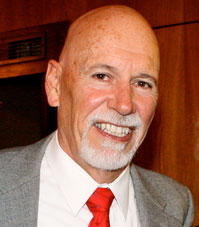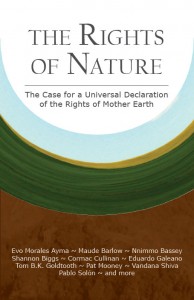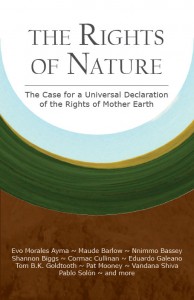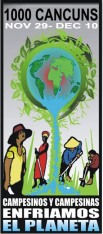 Blog Action Day is an annual event held every October 15 that unites the world’s bloggers in posting about the same issue on the same day with the aim of sparking a global discussion and driving collective action. This year’s topic is water.
Blog Action Day is an annual event held every October 15 that unites the world’s bloggers in posting about the same issue on the same day with the aim of sparking a global discussion and driving collective action. This year’s topic is water.
It is widely understood that the ecosystems we as humans rely on to survive are diminishing, depleting, and drying up. Water— most essential to life– is being privatized and mismanaged at the cost of people’s heath and livelihoods, namely by multi-national corporations that are extracting water from communities without their consent.
Fortunately there is a movement towards a more just and sustainable stewardship of our resources. People worldwide are beginning to challenge this structure. In September 2010, the Global Alliance for the Rights of Nature was established to propel a movement on the rights of nature in order to recognize the right, per se, of an aquifer to replenish itself or a river to flow. Global Exchange and the Council of Canadians are compiling a book on the Rights of Nature with participation from all corners of the world, where inspiring human rights and environmental leaders are speaking up for the rights of nature. Below is a piece from the book in which local activists in Mt. Shasta, CA are interviewed about their quest to assert the right of water in their community. Read and be empowered!

Mt. Shasta, CA — Recognizing the Rights of the Sacred
Global Exchange interviews Angelina Cook and Ami Marcus, of the Mt. Shasta Community Rights Project*
The picturesque mountain hamlet of Mt. Shasta is on the verge of making history in California and changing the debate about water in this draught-ridden state by passing the first law recognizing ecosystems and climate rights. Ancient water flows under the iconic snow-capped volcano, considered a sacred site by the Winnemen Wintu tribe. Yet the region serves as one of the main water sources for the state’s needs and corporate water bottlers. Now hydropower corporations are seeking to manipulate weather patterns, capture and own water before it hits the ground through the chemical ‘seeding’ of storm clouds. When residents discovered that constitutional protections allow corporate actors to override community concerns for themselves and the ecosystem, the issue became a matter of rights. With assistance from Global Exchange (GX) and CELDF, local residents formed the Community Rights Project to educate neighbors about the power of asserting community rights over corporations, and how recognizing the rights of nature provides a powerful new framework for protecting this beautiful place.
GX: What makes water withdrawal and cloud seeding harmful?
Two major multi-national corporations are already extracting undisclosed amounts of local water. When private interests manage water, the drive for profit overrides community interests. Cloud seeding is severely understudied and poorly understood, yet the state allows it WITHOUT regulation and WITHOUT environmental review. Nature is not a machine and we can’t treat it like an engine. We trust natural cycles for the amount and location of water we receive. Toxins like silver iodide are not manufactured to be dispersed into the air and environment. Cloud seeding can also result in catastrophic weather.
GX: Why not use existing “solutions” like regulatory law?
When it comes to upholding natural integrity, the regulatory system is dangerously inadequate. It exhausts the efforts of citizen stewards and denies us the right to say “no” to unwanted activities and development. At best it is designed to limit harms—and take a look at the results—every living system on the planet is in decline. If we expect different results we’re going to have to adopt a different strategy. When we asked ourselves how can we rise up to our responsibility as stewards of the Earth and prevent environmental destruction, we realized that we would have to unravel the regulatory juggernaut and embrace the rights of something much deeper and more fundamental than ourselves. Our current regulatory paradigm perceives nature as property to be used and exploited in any way that land owners and share holders deem profitable. This model was never designed to put nature first. Adopting new models for environmental governance is critical if we hope to restore and maintain a climate hospitable for humans on planet Earth.
GX: If this ordinance passes, you will be the first community anywhere to recognize rights for the climate. Can you talk about that?
Recognizing the rights of nature is acknowledging the indisputable reliance of human systems upon ecosystems, interconnected both visibly and invisibly through climate. We want to protect the natural weather cycles that create the purity and abundance of Shasta waters, meaning we must prohibit the contamination and manipulation of our atmospheric waters. In doing this, we are initiating the grassroots regeneration of our climate at the local level.
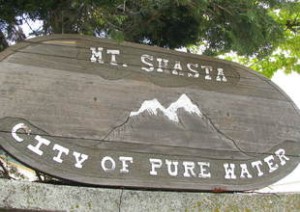 GX: Not everyone in Mt. Shasta embraces the rights of nature provisions in the ordinance Could you speak to that?
GX: Not everyone in Mt. Shasta embraces the rights of nature provisions in the ordinance Could you speak to that?
Local objections to this ordinance have been based in fear and misunderstanding. The Mount Shasta area is in the heart of California’s timber basket and our economy was raised on resource extraction and environmental exploitation. Though decades of economic desperation the region has and continues to signal the unsustainability of resource exploitation for private profit, a significant faction of our local mentality remains stuck in the quagmire of human dominance over natural systems. It is an education process for our community.
GX: In what ways do you see the ordinance being beneficial for the future of Mt. Shasta and California?
Mt. Shasta serves headwaters to the Sacramento River. What happens to water here trickles downstream and sets the tone for water resource management throughout the state. Recognizing nature’s rights to exist and flourish has the physical and political potential to establish a higher precedent for genuine environmental stewardship in California and Salmon Nation. Collectively, we have a waning window of opportunity to honor our natural heritage and restore our natural integrity. Reclaiming community rights as superior to corporate interests through the legislative process is a daunting, yet necessary step in our path towards biologically integrated conscious evolution.
*Interview with Shannon Biggs

